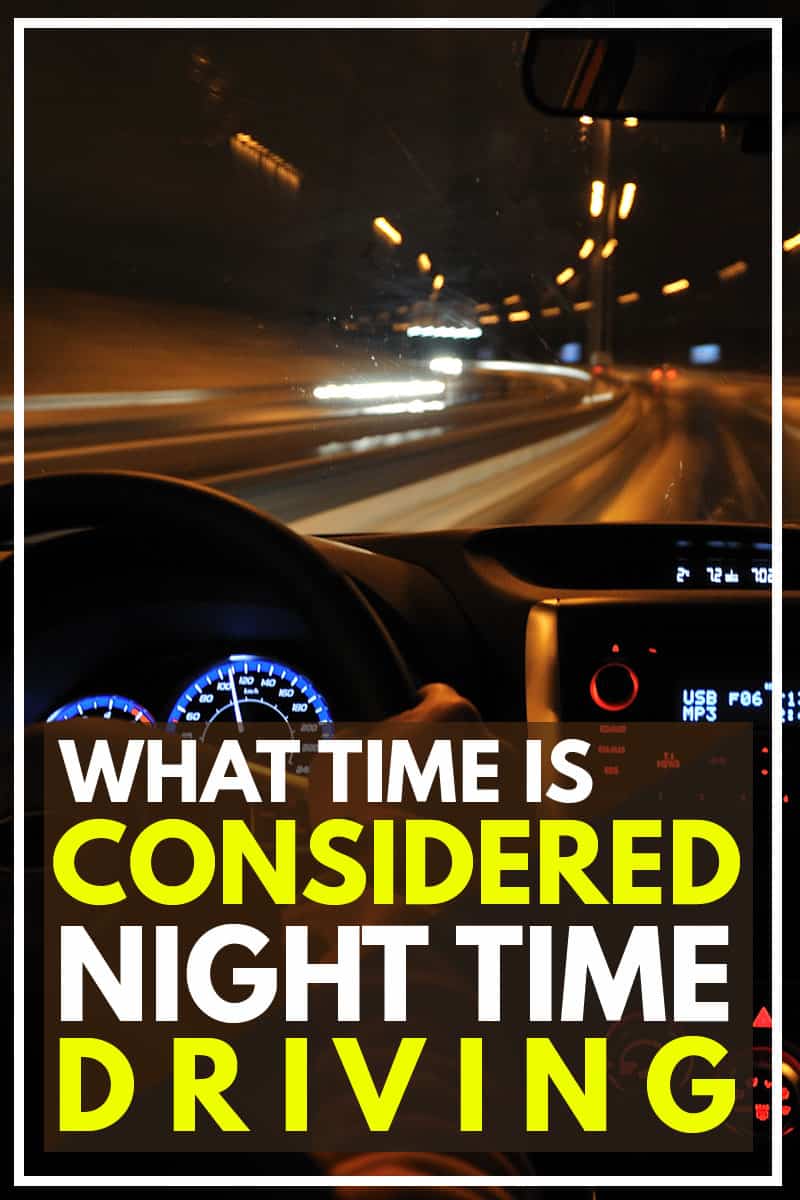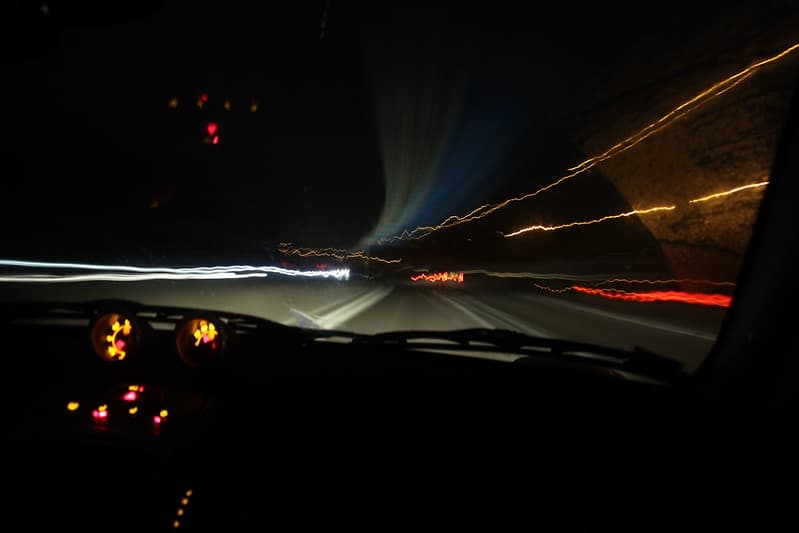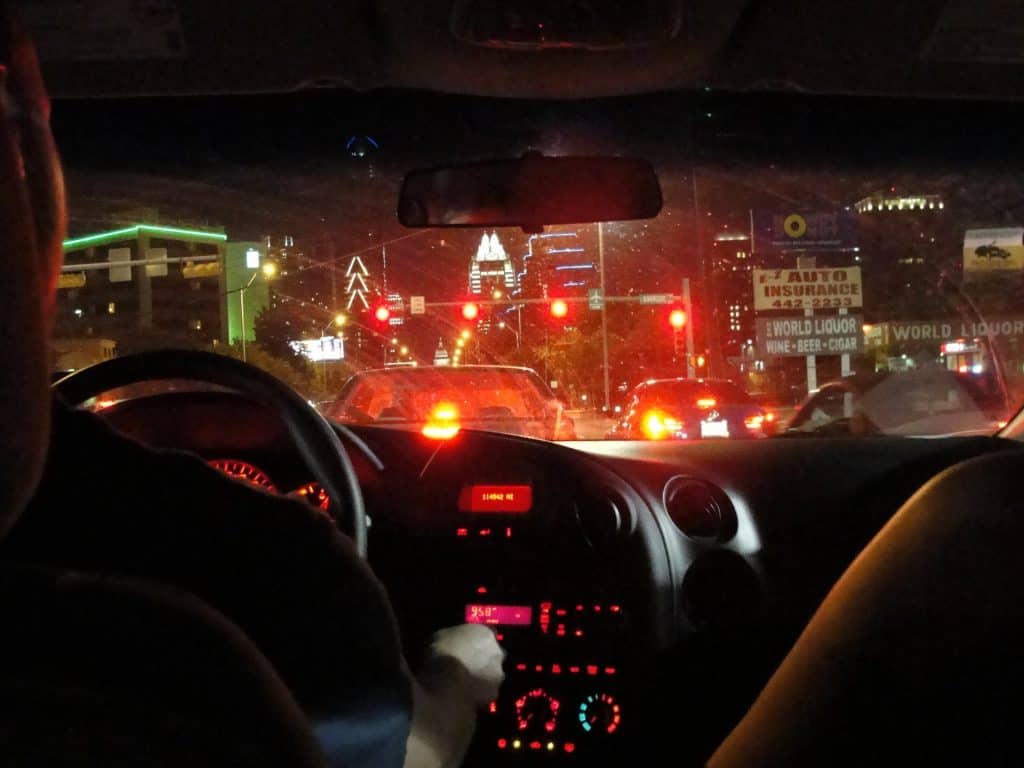 You have just gotten your driving permit, and you need to know what is considered night time driving. You are in luck, you've found the right place to get that answer!
You have just gotten your driving permit, and you need to know what is considered night time driving. You are in luck, you've found the right place to get that answer!
The exact answer to this question varies by state; no one set time that applies to every state. Usually, it's considered night time driving when you drive between an hour after sunset and an hour before sunrise.
Continue reading further for more specific details so you can be prepared to get your nighttime hours logged safely and cautiously.
[toc]
Is it Better to Drive at Night or Day?
If you live in a heavily populated metropolitan area, it may seem like driving at night would be the preferred option. There are many fewer cars on the road, less traffic to endure, and fewer cars to have to keep an eye on. Sometimes it can feel more relaxing to drive at night versus driving during the hectic day time.
That being said, it's actually better to drive during the day. This may seem counter-intuitive because that's when there are many more traffic jams and drivers you have to be aware of. But because it's bright out, it's easier to see all of your surroundings. Better visibility is preferable from a safety standpoint.
Why is it Harder to Drive at Night?
In short, it's harder to drive at night for the opposite reason it's easier to drive during the day. In detail, there are three reasons in particular as to why night time driving is harder.
Glare
As you know, once it's dark outside you need to have your headlights on. And every other driver on the road knows this as well, including the cars driving in the opposite direction of you. Because of that, you run a high risk of having to deal with glare while driving.
Glare is definitely one of the main interferences with clear vision. It's even worse when it's glare from someone else's high beam lights flashing. When you drive and light hits your eyes, there's a small period where your eyes are trying to recover; that's a few seconds of driving with blurred vision.
Some tricks you can do to reduce glare include:
- adjusting your mirrors
- properly cleaning your windshield or mirrors, wiping away smudges which also hinder vision
- investing in night driving glasses (more on this later)
- changing to anti-reflective vision glasses (if you wear them)
Less Light Equals Reduced Vision
Without the daylight to help enhance visibility, you're much more likely to run over a pothole, not see a pedestrian, or not see a road that a car could exit from. Since reaction time depends heavily on vision, you become less prepared to react to danger.
Fatigue
According to research done by the National Sleep Foundation, roughly 60% of drivers admit to driving while tired, 37% have fallen asleep behind the wheel, and of that, 4% got in an accident or near accident because of it. Many of these accidents happen when people are usually asleep: between midnight and 6 AM.
If you feel tired while driving, pull to the side and nap for a bit or take breaks in between long periods.
What Should You Do When You Are Driving at Night?

Before driving, make sure that you've taken the measures we've mentioned earlier to reduce the risk of glare. They won't prevent glare as a whole, but the less of it the better.
Additionally, be fully awake before driving. Driving while drowsy has about the same amount of risk as driving after drinking three beers. According to the National Safety Council, you're three times more likely to get in a car crash by driving sleepy.
The following suggestions are for the benefit of other drivers, not just you:
- Make sure all of your external lights work. This is so other drivers can see you from a distance, making a turn, or see you approaching.
- Be mindful of how fast you're going. If you drive a little bit slower than you would during the day, you'll gain a few seconds of reaction time.
- Increase the distance between you and other cars. A good way to tell how close you are to a car is with your headlights; iDrive Safely suggests that you drive far back enough that you can stop within the illuminated area.
- If you have to pull over, turn on your hazard lights or use reflective triangles so passing drivers can see you.
- Consider taking a back road. Two-lane highways are where you're most susceptible to glare. Traveling on a road with just one lane reduces those chances.
- When driving, place more focus on the lines on the road. That way, your eyes are not directly looking at the road lights, but instead, are looking at where the lights are shining on.
How Many Night Hours do Learners Need?
Before progressing into obtaining your driver's license, you have to reach a certain amount of hours of on the road experience. The specific amount of hours needed to continue varies for each state, including the District of Columbia; it can range from 50 to 120 hours of driving experience.
Nighttime driving hours are included in that. In fact, it's actually required as part of the 50 to 120 hours of total driving experience. Depending on the state, ten hours of nighttime driving will likely be enough to meet the requirements. Some states, like Alaska for example, consider night driving as a "progressively challenging circumstance."
In very few states, the transition into a license is very lax regarding nighttime driving requirements. Iowa, for example, you would only need two hours of nighttime driving to meet their requirements. In South Dakota, you don't even have to worry about any amount of hours for the license.
What is Considered Nighttime Driving in Texas?

For our young drivers in the state of Texas, the DMV website provides a PDF containing all of the information needed to get their licenses. You can view this here. But since there are so many pages, we're giving you the main points of the document. It also includes a behind-the-wheel practice log; the qualified adult passenger marks down all the time spent behind the wheel.
Daytime hours in Texas is considered the period between 30 minutes before sunrise and 30 minutes after sunset. Nighttime hours is the period starting 30 minutes after sunset and ending 30 minutes before sunrise.
How Many Nighttime Driving Hours are Required in Texas?
To file for a provisional license, you are required to reach and log 30 hours of experience behind the wheel. Of those 30 hours, ten of those need to take place at night.
Regardless of the time of day, an adult that meets the state requirements must be in the vehicle with you. A qualifying adult is one who holds a driver's license, is 21 years old or older, and has a minimum of one year of experience driving. This qualifying adult can not be asleep, tipsy or drunk, or doing something that prevents him or her from observing you drive. When the qualified adult is filling out the log, only one hour of drive time is counted per day.
Texas DMV recommends that a curfew is followed for safety reasons. In 2016, 34% of all fatal car accidents happened between 6 PM to midnight.
What Causes Poor Vision at Night?
Your eyes' ability to see in the day is much different than at night. Lack of adequate night vision is a common deficiency that most people often ignore. One likely cause is astigmatism; the curvature of your eyes can distort light, causing glare from lights or difficulty focusing on the road. Your eyes have to take a longer time adjusting its vision after the glare.
Another possibility is due to cataracts, although this is more so for those up in age (more on that later). Cataracts are the result of a buildup of cells behind your eye's lenses. This causes a distortion of any light your eyes come in contact with or blurred vision. Cataracts can be removed by getting eye surgery.
On rare occasions, depletion of vitamin A and zinc could cause hindered night vision, too. The likeliness of this being the cause is very low since most U.S. citizens get their recommended levels of both. Although it doesn't hurt to increase vitamin A or zinc intake just in case; foods with these include sweet potatoes, carrots, mangos, greens, beef, poultry, and beans.
People with genetic conditions like retinitis pigmentosa shouldn't drive at night, according to Healthline. Genetic vision impairments aren't treatable as the gene causing hindered vision can't be fixed with surgery.
How Can I Check my Night Vision?
Humans and some animals can adapt to night vision with pupil dilation and eye rod cells. To do a self-check on how your night vision is, we've provided instructions from Science.com on how to test yours.
To test your pupil dilation, be in somewhere dark for roughly 20 minutes so your eyes can adjust. Cover up one of your eyes, and shine a light in the other for a few minutes. After a few minutes pass, cover up the eye that you flashed a light into and see with the previously covered eye. If you can properly see in the dark with that eye, your night vision is fine. Don't immediately attempt this if you feel dizzy during the process. Instead, close your eyes for five minutes, then try walking around. Don't attempt this test too many times at once.
To test your eyes' rod cells, stay in darkness for 20 minutes. Then find a small item to look at; focus on as much of its detail as you can from looking straight at it. Finally, look at it with the side of your eye using your peripheral vision. The periphery of your eye is one of the contributors to proper night vision.
If you're already experiencing difficulty seeing at night, we recommend scheduling an appointment with an eye doctor. There's no treatment that will cure night vision problems (besides cataract surgery), but you can at least get recommendations on things to do or get to make seeing at night much easier.
Does Night Vision Get Worse With Age?
Once we reach a certain age, our eyes slowly begin to develop vision-related issues. The following issues begin to occur, making it hard for older drivers to see at night.
- Your pupils gradually shrink and become less capable of dilating in the dark. The retinas of elders over age 70 receive so little light, it's almost like they're driving at night with sunglasses on.
- Aging causes your cornea and eye lens to be less clear, scattering any light that your eyes come in contact with. This makes older drivers more susceptible to glare and less likely to see objects on the road.
Many older drivers try to avoid nighttime driving for these reasons, which is recommended. Not only vision but also mental and physical reaction time is reduced with age. Those two facts make driving for elders not safe at night. If you know an elder who can drive, ensure they keep the driving to day time only.
Are There Glasses for Night Driving?
You can easily find some kind of glasses that benefit night time vision. These glasses let you see light better and reduce glare from other cars. Be careful with selecting a pair of glasses with ultraviolet lenses; sometimes they can block out too much light.
 Normal vision glasses only allow 92% of light. Get anti-reflective (AR) coating on your glasses to allow almost 100% of light through. The coating helps sharpen your vision as well.
Normal vision glasses only allow 92% of light. Get anti-reflective (AR) coating on your glasses to allow almost 100% of light through. The coating helps sharpen your vision as well.
If you're seeking glasses that help with bright sunlight and night vision, look into this pair of night vision glasses from Clear Night on Amazon. These glasses stop glared prevent the light from slightly blinding you. Additionally, they're coated with 400UV protection, meaning that you can also use them in the daytime to decrease the beaming light of the sun. Just be certain not to rely heavily on these; they serve as a convenient temporary solution, but they are not a substitute for an eye exam or AR coated vision glasses.
